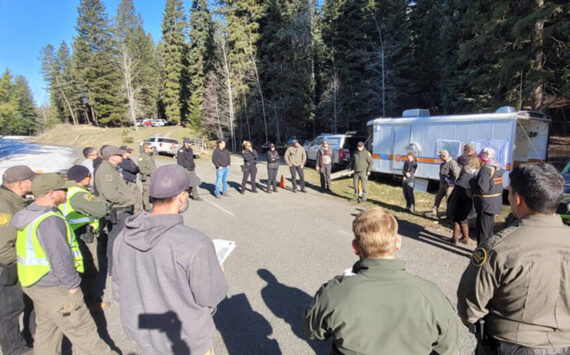OROVILLE – A newly completed Emergency Management Plan will mean the cities of Okanogan County and the county itself will be eligible for FEMA funds should there be a disaster, natural or otherwise.
The ability to get FEMA (Federal Emergency Management Agency) funding has become even more important as the focus of Homeland Security has switched back to the urban areas of the country and funding for equipment for rural counties and municipalities has dried up.
“For example, if there was a dam break on the Similkameen then that gives you the right to have FEMA funds,” said Scott Miller, director of the county’s Emergency Management Department, a branch of the county sheriff’s office.
Miller was speaking at the Oct. 20 meeting of the Oroville City Council. He went on to say the county was susceptible to any number of disasters including floods, windstorms and earthquakes, but for a large part wildfires are the biggest threat.
In fact the Community Wildfire Plan was one of the first components completed for the large comprehensive Emergency Management Plan started nearly five years ago.
“With the acceptance of FEMA and the state of our plan, we are now eligible for All Hazard Mitigation funds… we had to have the plan in our hands. FEMA has approved it and now it has to be signed by all jurisdictions,” Miller said.
Rather than the county and each municipality doing a plan of its own — which would have been a costly burden for each, the county and cities joined together to fund the plan.
“As opposed to Oroville having to pay $100,000 for its own plan, your bill was significantly less,” Miller said.
Each city was asked to contribute to the information in the plan as well. In addition to planning out what is the best way to approach a number of emergency situations, the plan also lists the equipment and personnel available to respond for an emergency occurring anywhere in the county.
“You folks are compliant by joining (in the plan) with the county and all the other cities… your legal,” said Miller. “There is no such thing as just the county, all communities are expected to help.”
The first responders in the area, police, fire and ambulance are expected to show up in a “reasonable time frame,” according to Miller. By way of example, he recalled the landslide that occurred in Canada earlier in the year. He described how county law enforcement worked with their counterparts from the Oroville Police Department to warn people with dredges in the Similkameen River of a potential flooding event if the water in Canada were to be released suddenly and come hurling down the river. The Oroville Police Department participated even though the potential danger was centered outside of the city limits.
“The public has a reasonable expectation that someone will show up to help and that’s not necessarily the state or the federal government… especially in the early hours of an emergency event,” Miller said, adding, “I’m a 24/7 on-call person. We’ll guarantee we’ll show up.”
While working on the plan Miller said he had developed “real good relationships” with all the cities and the first responders. He also said that not all emergencies required a response from the county and several municipalities.
“Sometimes the emergency concerns just one household and we call the Red Cross, like in the case where a family needs a place to stay after a fire,” Miller said.
The cost to fund Emergency Management is approximately $125,000, according to Miller. Okanogan County had a population of around 39,000 based on the 2000 U.S. Census. Oroville’s population based on the same census was 1653, or 4.18 percent of the total county population. Oroville will pay $5211 as its share. Miller gave examples of the costs to some of the other municipalities in the county. He said Tonasket (1013 pop.) will have to pay $3193; Omak (4721 pop.), $14,884 and Conconully (185 pop.), $583. The unincorporated area’s share was approximately $75,000, according to Miller.
“Last year my position was totally funded by Homeland Security and we were buying all sorts of equipment,” said Miller, who adds that now Homeland Security funds are all going to urban areas.
Among the equipment purchased with the Homeland Security Funds were narrow band radios for the various law enforcement agencies in the county. Most law enforcement, fire and ambulance will be switching to the new radio frequencies in the next few years.
“Now my department is funded based on each community paying its full share. And not having to fund an Emergency Management Department of your own I feel is a significant savings to the community. If we have an emergency and need to fund something to the tune of $10,000 then we go to the commissioners and they fund it. They have never sent a bill… in the past the commissioners have always stepped up to the plate whether it was for sandbags or use of county equipment and manpower,” said Miller.
Miller recalled the recent emergency in Brewster where there was a leak of anhydrous ammonia at one of the warehouses.
“We had to evacuate 84 people to Pateros. We managed the event for days. We now know we have the capability to do that,” he said.
The council authorized Mayor Chuck Spieth to sign the Emergency Management Plan.
“I would just like to comment on the involvement in the situation with the landslide. I watched our department and yours and it went really well,” said Mayor Spieth.
“The best part of the job is our relationships. I think the relationships have paid off and we’ve had no distractions from things like petty arguments,” Miller said.






